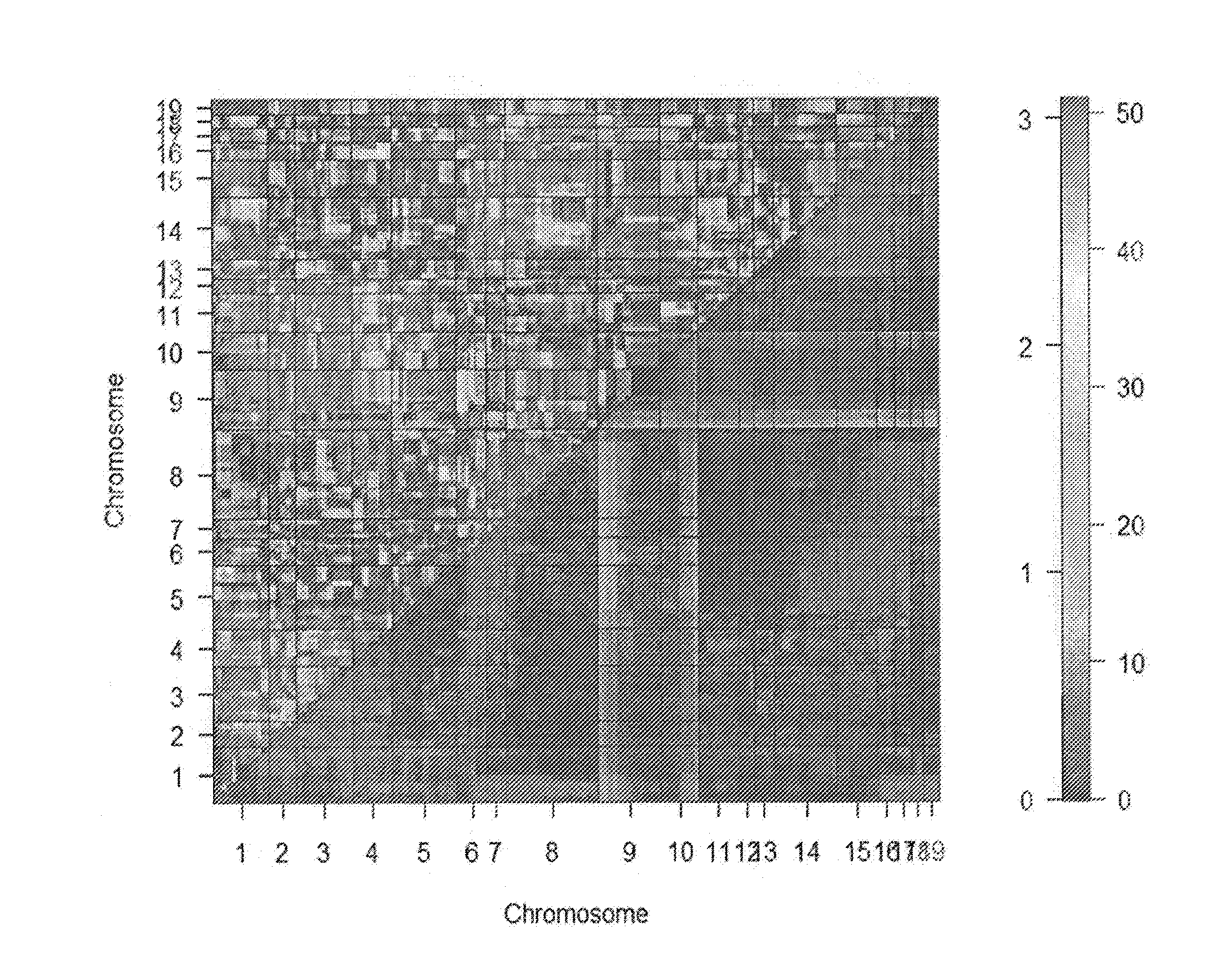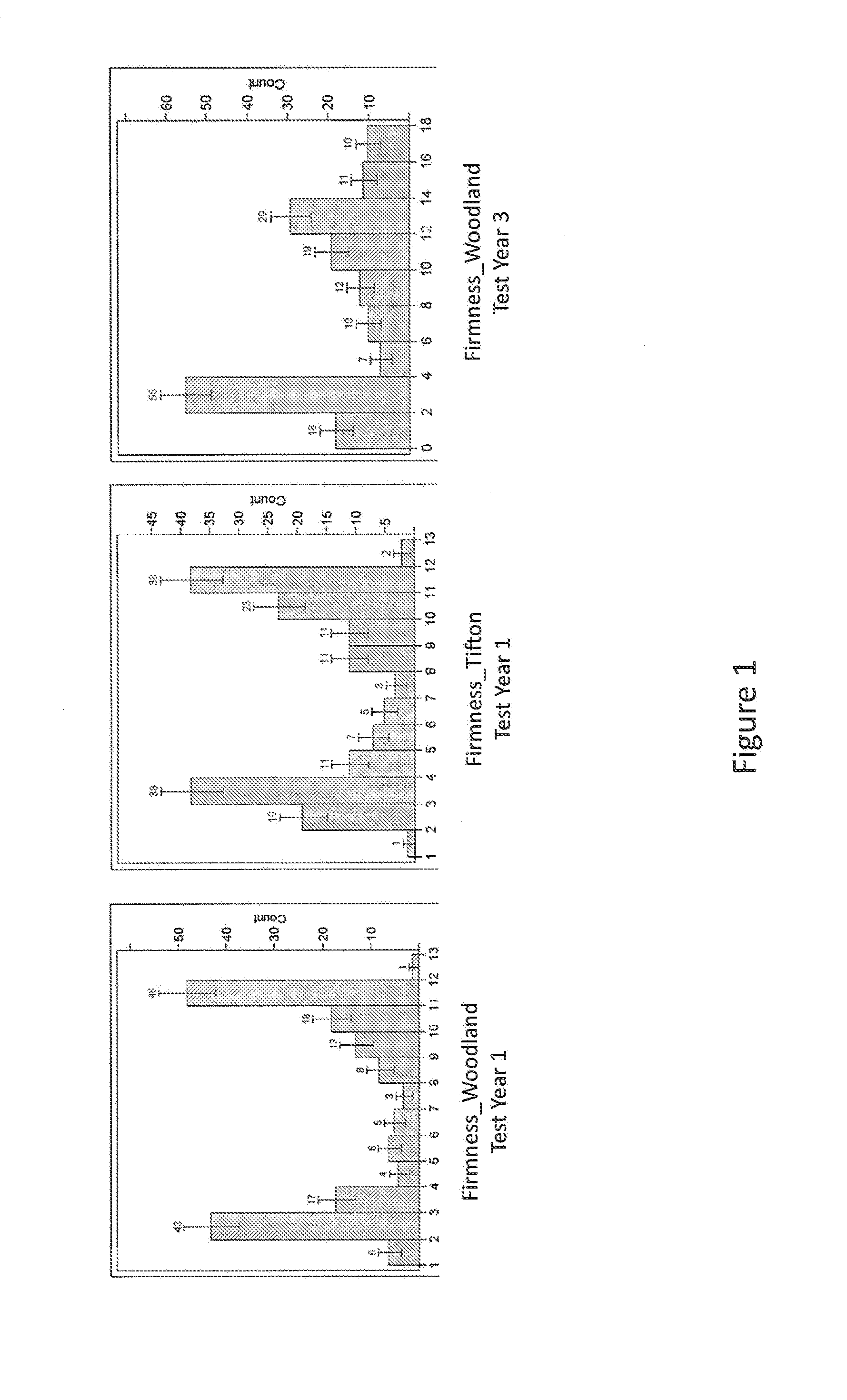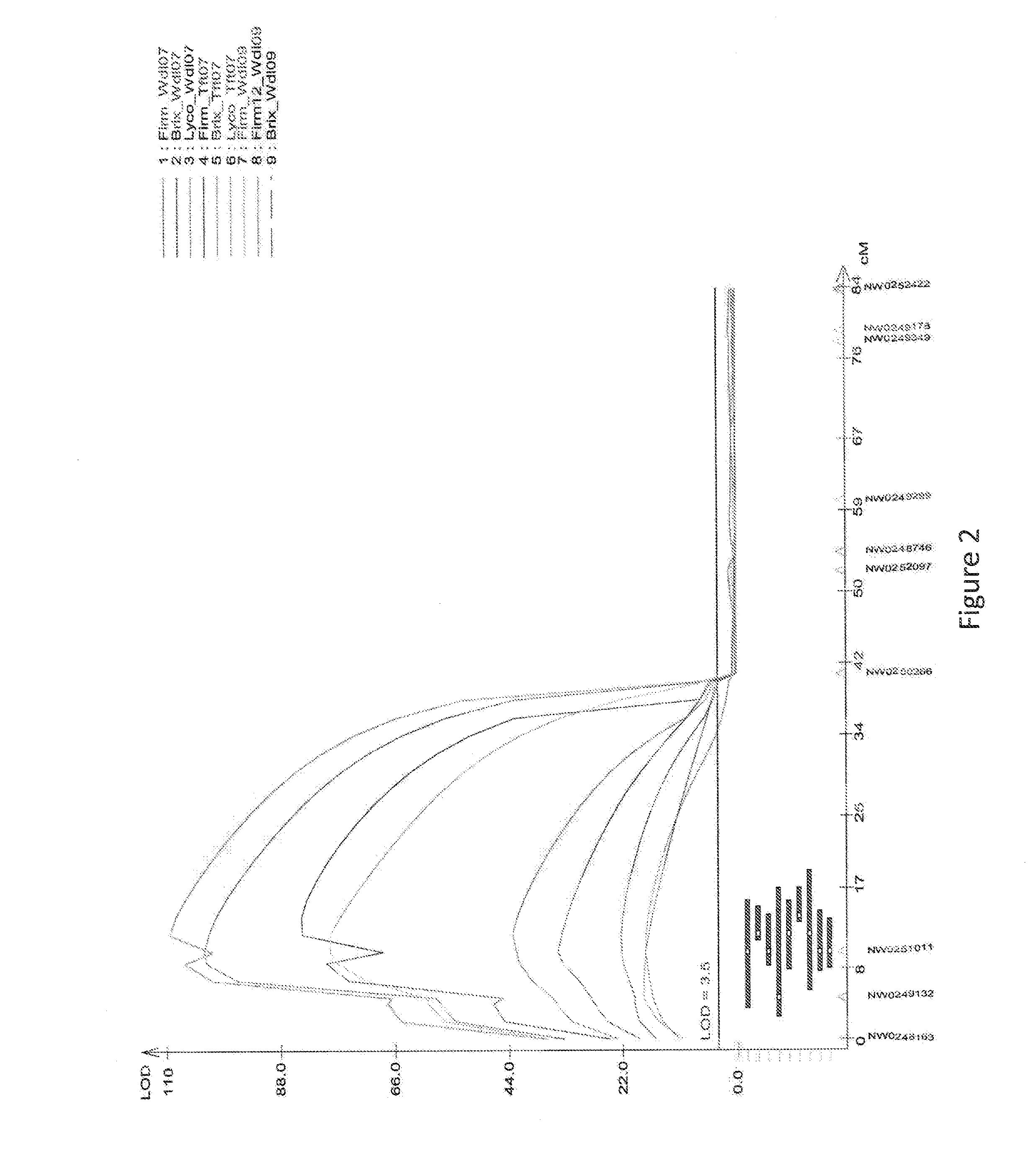Methods and Compositions for Watermelon Firmness
a watermelon and composition technology, applied in the field of methods and compositions for watermelon firmness, can solve the problems of minimal processing watermelon, overripe fruit showing signs of decay, and fruit not uniformity
- Summary
- Abstract
- Description
- Claims
- Application Information
AI Technical Summary
Benefits of technology
Problems solved by technology
Method used
Image
Examples
example 1
Firm Flesh Watermelon
[0110]Firm flesh watermelon accessions have been identified in different species and varieties of the genus Citrullus, including C. colocynthis, C. lanatus var. citroides, and C. lanatus var. lanatus. PI296341 is a C. lanatus var. citroides accession originating from Africa available through the Germplasm Resources Information Network. PI296341 was backcrossed for several generations to all sweet type elite inbred lines (C. lanatus var. lanatus) to derive the ultra-firm flesh watermelon line 03LB3387-1.
[0111]A segregating population was developed from the cross of 03LB3387-1 and WAS-35-2438 by single seed descent for the mapping of the ultra-firm flesh trait. The population 03LB3387-1 x WAS-35-2438 consisted of 186 F4:5 lines and was planted in three environments: Woodland, Calif. and Tifton, Ga. Test Year 1, and Woodland, Calif. in Test Year 3. The two experiments in Woodland, Calif., were planted in randomized complete block designs, while the Test Year 1 tria...
PUM
| Property | Measurement | Unit |
|---|---|---|
| weight | aaaaa | aaaaa |
| weight | aaaaa | aaaaa |
| weight | aaaaa | aaaaa |
Abstract
Description
Claims
Application Information
 Login to View More
Login to View More - R&D
- Intellectual Property
- Life Sciences
- Materials
- Tech Scout
- Unparalleled Data Quality
- Higher Quality Content
- 60% Fewer Hallucinations
Browse by: Latest US Patents, China's latest patents, Technical Efficacy Thesaurus, Application Domain, Technology Topic, Popular Technical Reports.
© 2025 PatSnap. All rights reserved.Legal|Privacy policy|Modern Slavery Act Transparency Statement|Sitemap|About US| Contact US: help@patsnap.com



